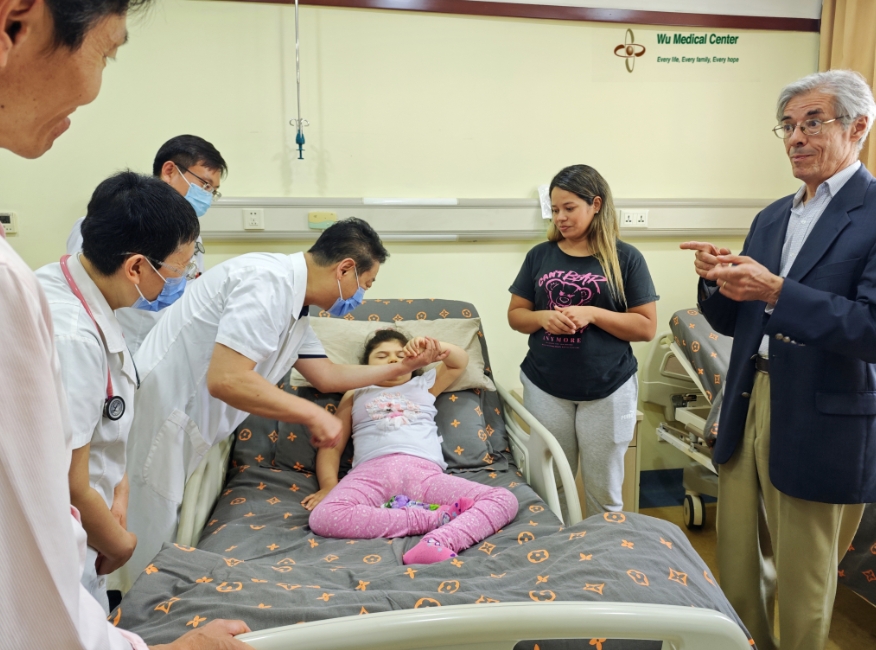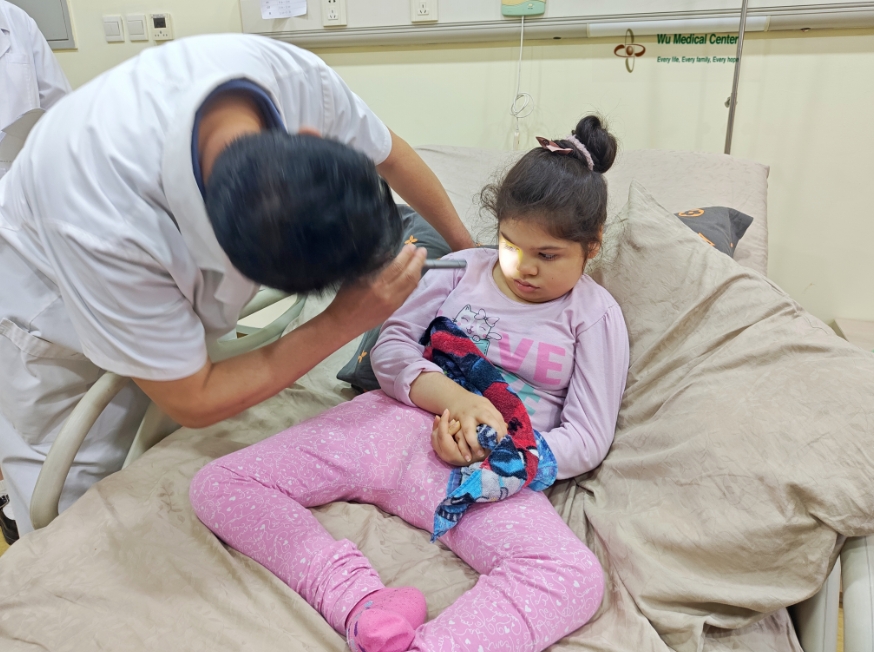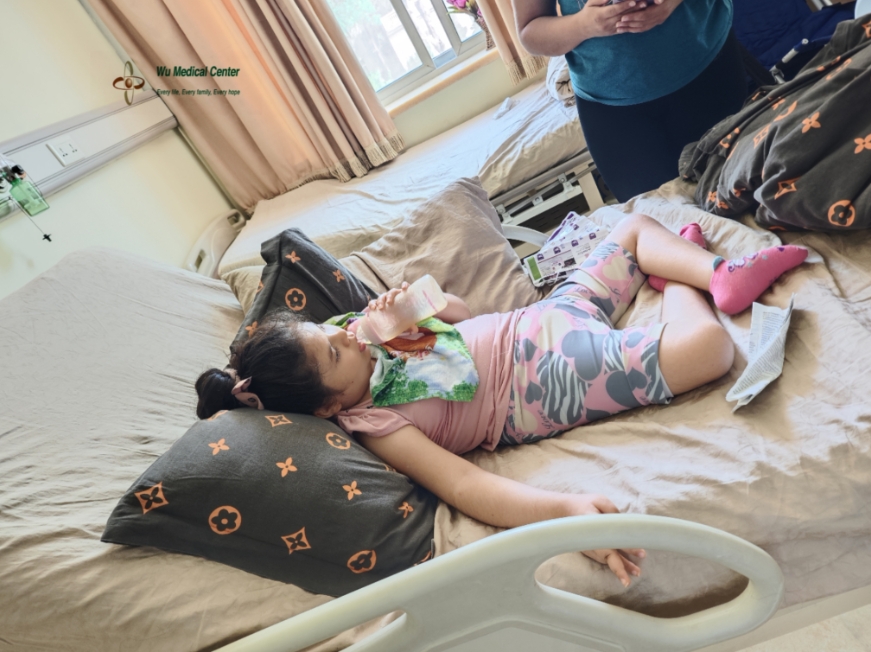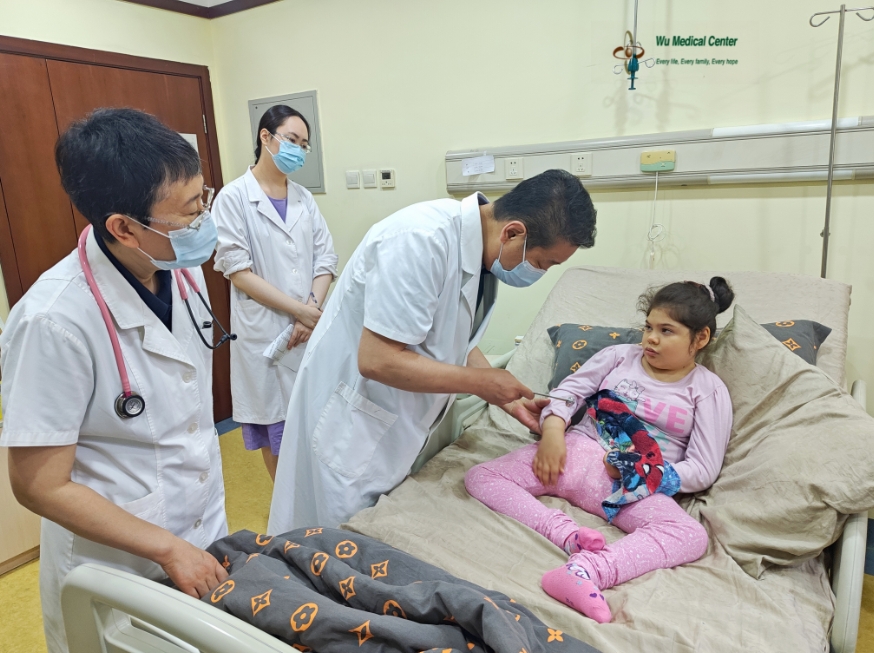Mariam Solange Gareis-1. Cerebral palsy 2. Secondary epilepsy-(Argentine)
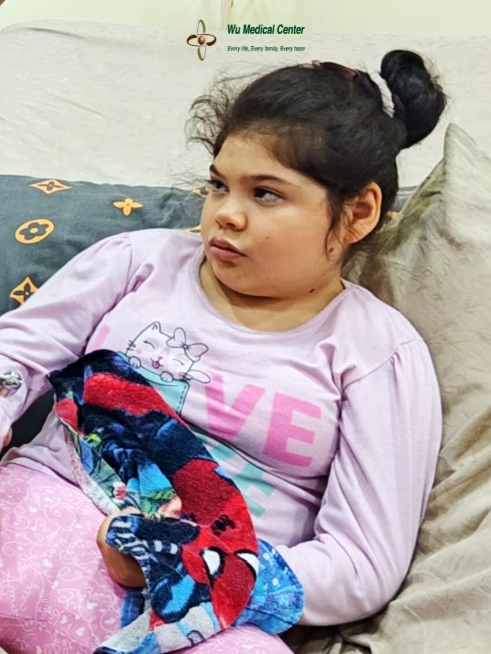 Patient's name: Mariam Solange Gareis
Patient's name: Mariam Solange Gareis
Gender: Female
Age: 11 years old
Nationality: Argentine
Diagnosis: 1. Cerebral palsy 2. Secondary epilepsy
Pre-treatment:
The patient had meningitis at birth, with seizures, and later it was discovered that she had neurological impairment, with dysfunction of her language, motor, and cognitive abilities. She had no headaches, nausea, vomiting, or loss of consciousness.
Past Medical History:
The patient had meningitis at 28 days of birth and experienced a grand mal seizure when she was 4 years old during adjustment of her epilepsy medication. Currently, she took Oxcarbazepine Oral Solution, 6ml, q12h, and was well controlled with this medication. She has not experienced a grand mal seizure for the past year. She has been diagnosed with hereditary Mediterranean fever (HMF) for 9 years and has not taken any medication for this condition. She also had a history of gastroesophageal reflux disease.
Admission Physical Examination:
The patient had a pulse of 102 beats per minute, a respiratory rate of 20 breaths per minute, an blood pressure of 89/61 mmHg, a height of 125 cm, and a weight of 27 kg. Her skin was without jaundice or bleeding points. Auscultation reveals coarse breathing sounded in both lungs with no obvious dry or moist rales. Her heart sounds were strong, regular, and without significant murmurs in any valve area. Her abdomen was flat and soft with the liver and spleen not palpable.
Neurological Examination:
The patient appeared clear-headed, but has lost the ability to speak and expresses her wishes through crying. Her memory, calculation ability, and orientation were not cooperating. Her pupils were approximately 4mm in diameter and insensitive to light. Her visual acuity and field of vision were extremely poor, with no visual acuity or field of vision. Her nasolabial folds were symmetrical bilaterally and her mouth opening and tongue protrusion were not cooperating. She could turn her head and had autonomous movement in her limbs, but her movements were poor overall. Her lower limbs were flexed at the knee, with a flexion angle of 70-80 degrees. Her ankles were malformed, and there was no coordination between her arms and legs during muscle strength examination. She could grasp objects with her hands and complete the process of sitting up with support from the bed head to 30 degrees, and could maintain an independent sitting position. However, she could not complete movements such as turning over and crawling. There was no response to tendon reflexes in her limbs, and the pathological signs were negative. The tests of deep and superficial sensation and coordination movements could not be cooperated with, and the meningeal irritation signs are negative.
Treatment process:
The patient was diagnosed with "cerebral palsy" upon admission, and received treatment including neural stem cell and mesenchymal stem cell therapy to repair brain nerves, retina and optic nerve, nourish brain nerves and retina, improve circulation, regulate immunity, and comprehensive rehabilitation.
Post-treatment:
Patient's functions have improved significantly. She has demonstrated clearer reactions to external stimuli and name calling. Her facial expressions have become much more expressive. Her eyes have shown increased sensitivity to light and she can now track light. Her upper limb movements have become more flexible, with faster movements and the ability to use her left hand to wipe her saliva with a towel. She can also hold a bottle of milk and drink from it. Her lower limb movements have become more flexible, with improved leg lifting function and significant increase in knee range of motion from 70 degrees to 120 degrees. During her hospital stay, she received condolences from Argentinean officials.
